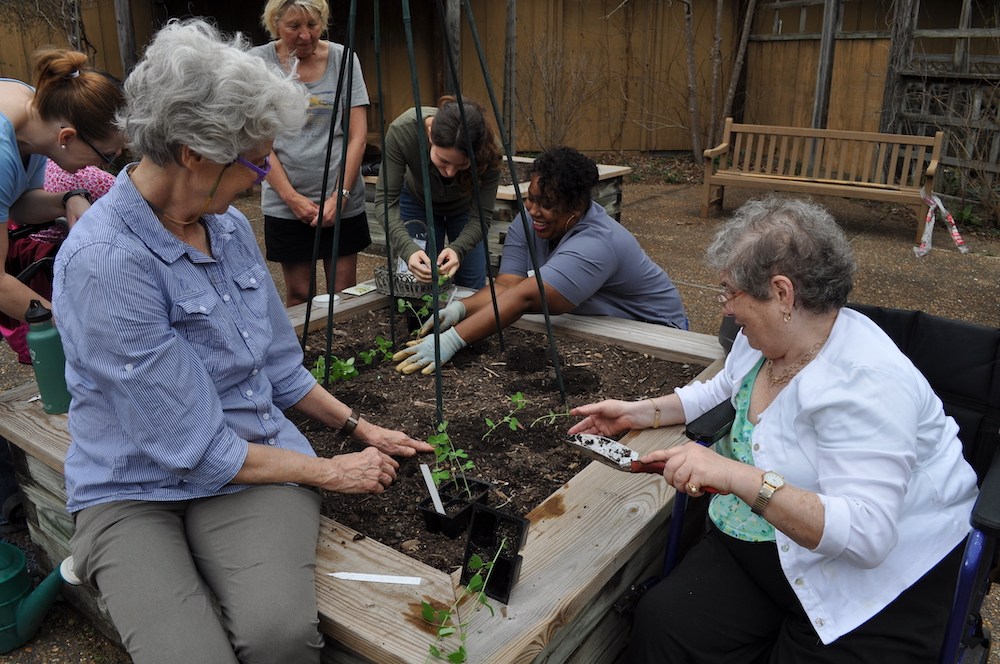by Abby Zaleski, Communications Student
The Horticultural Therapy program at the North Carolina Botanical Garden has a mission to promote health and well-being of people through positive interactions with plants and nature. Led by horticultural therapist Sally Haskett, this program benefits people of all ages and backgrounds, giving them support to get through the daily challenges they are facing.
The Horticultural Therapy program takes place both onsite, as well as at two outreach locations. At each of these locations, Haskett works with people of many different populations, such as those struggling with traumatic brain injuries, dementia, mental illness, physical limitations, and developmental disabilities. Many times, clients from UNC’s Center for Excellence in Community Mental Health visit the Farm at Penny Lane in Pittsboro to work with Sally on therapeutic gardening activities. This farm supports people with severe and persistent mental illnesses, and the work the participants complete in the gardens can make a world of difference in their self-esteem and confidence.
“The social stigma towards people with mental illness is a huge barrier. This program helps break down the barrier,” Haskett explained.
The program strives to establish goals at the beginning of each group session in order to make the activity session as therapeutic as possible. These goals can be general in nature for group work, or specific to the individual that Sally will be working with. The purpose of these goals is to improve cognitive, physical, emotional, or social issues that the client may be facing. In order to establish these goals, Sally consults with the client, and with their permission, also collects information from family members and case managers. By going into the horticultural therapy sessions with background knowledge about the participant, the program is able to create a more productive and efficient environment for achieving the goals that have been set.
Additionally, the Horticultural Therapy program is often used to complement other forms of therapy. Sally explains that while the therapies are separate and do not coincide with one another, the therapists try to dovetail their goals, in hopes of producing a synonymous end objective for the participants.
Haskett explained that after many years of working in the Horticultural Therapy program, she has seen participants improve by leaps and bounds. In working with patients suffering from dementia, the sensory stimulation often brings back positive memories through tactile work. Patients struggling with mental illness have come into group work sessions with little willingness to communicate with their peers, and by the end of the program have formed a supportive group with a focus on purposeful work.
Sally shared a success story of client who would often come into therapy very frustrated, but had no way to express her agitation. However, through the therapeutic process of watering plants, the client was able to calm down and focus on things aside from the frustrations arising from her mental illness. The client’s mother took the time to express her gratitude to Sally for her work in the horticultural therapy program, explaining that “the simple task of watering the plants and nurturing another living being” was enough help them avert a trip to the hospital on that particular day. To Haskett, expepriences such as that make the Horticultural Therapy program so worthwhile.
